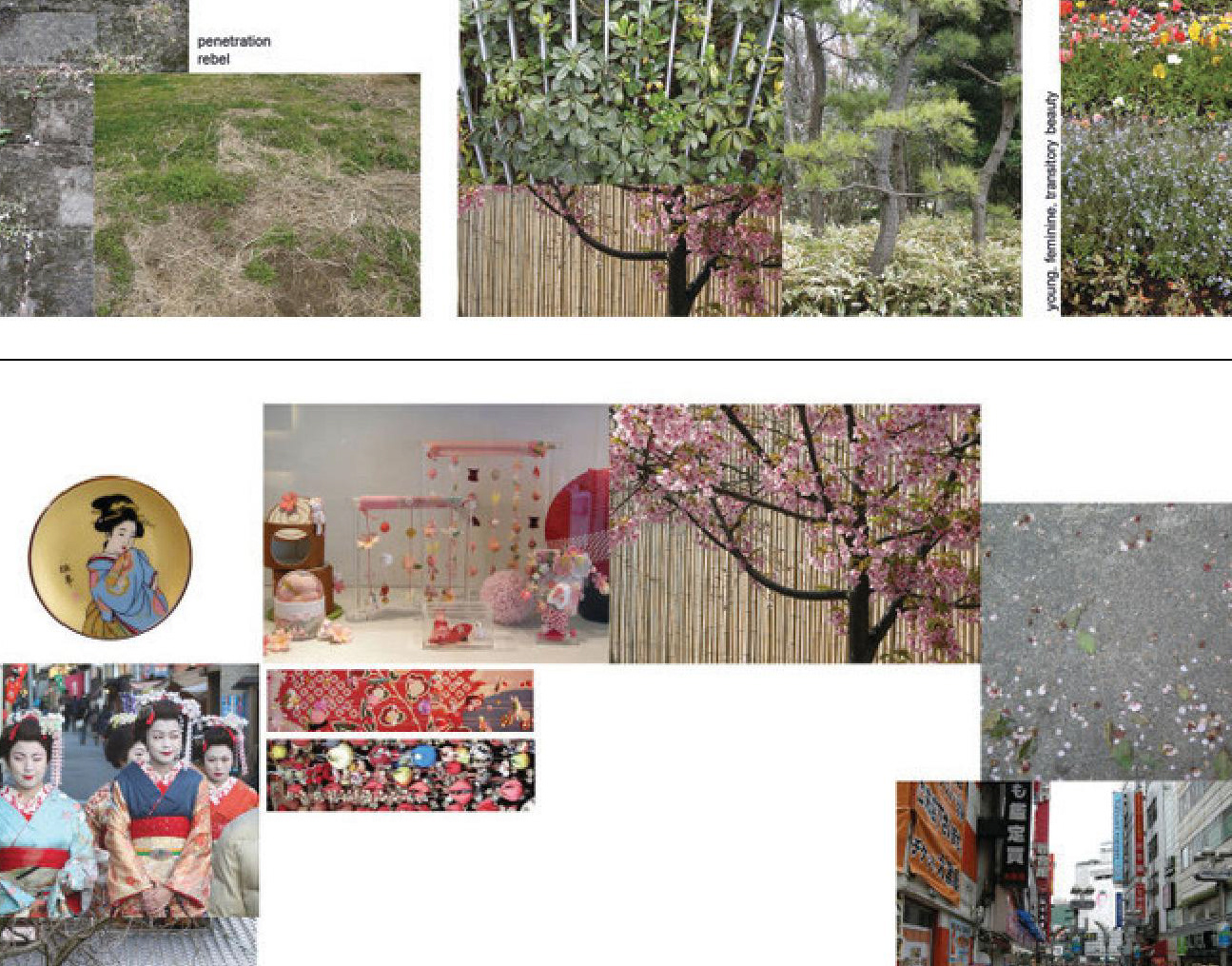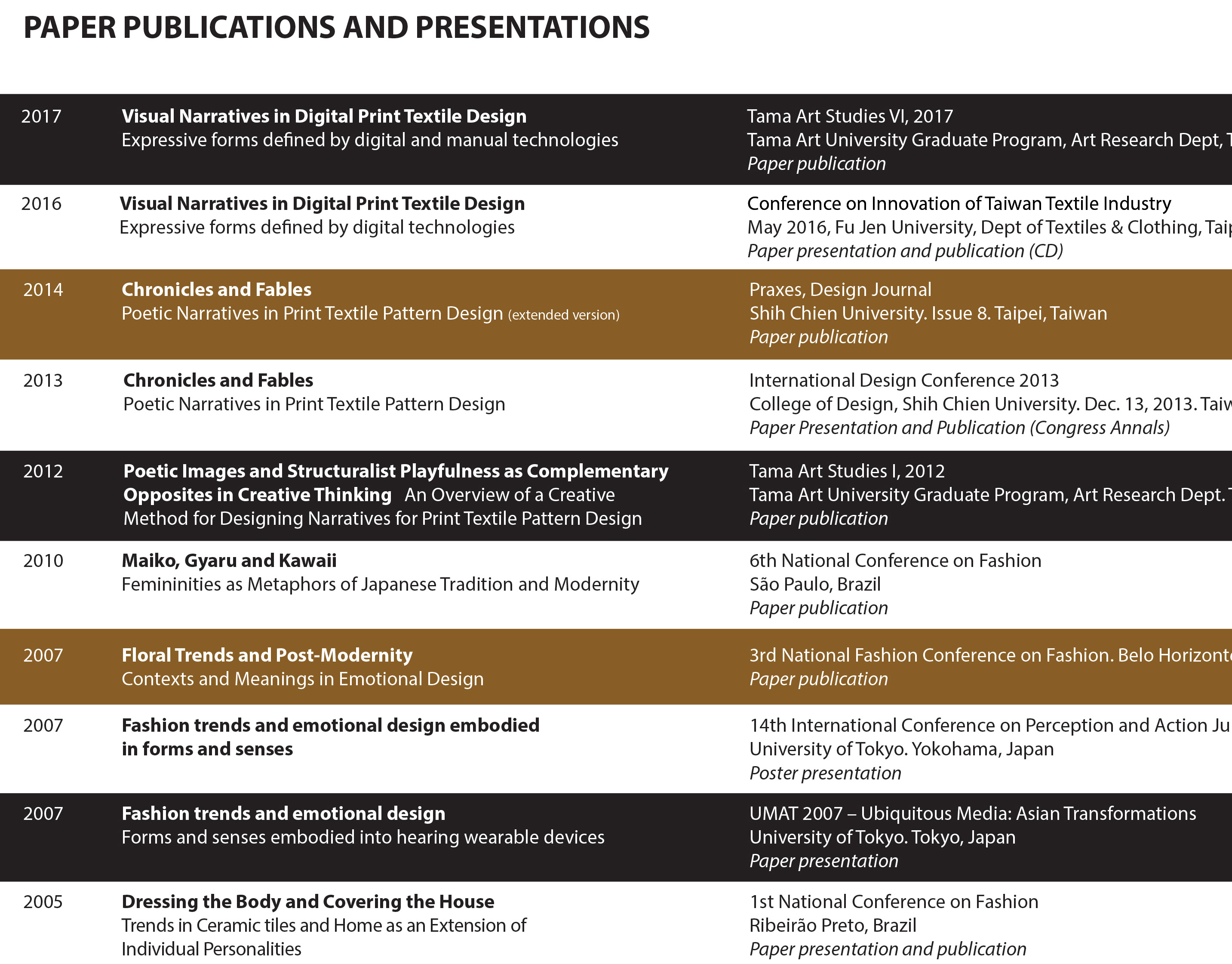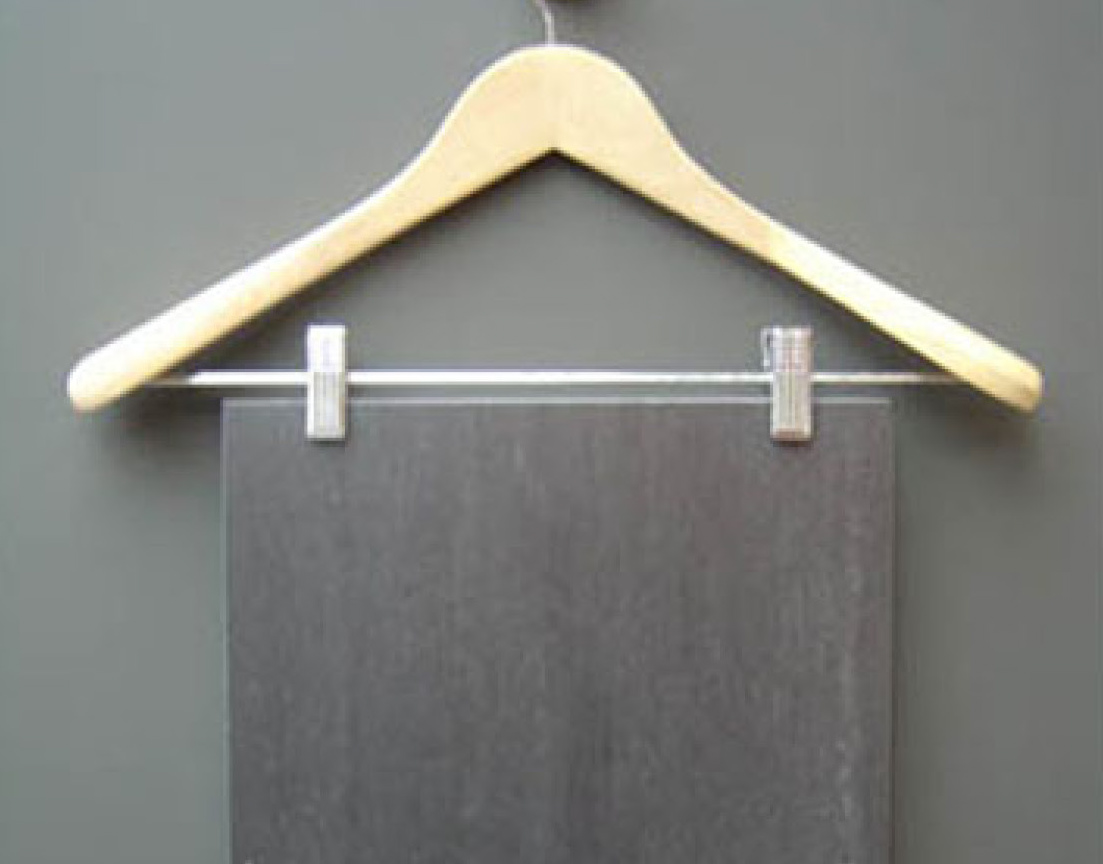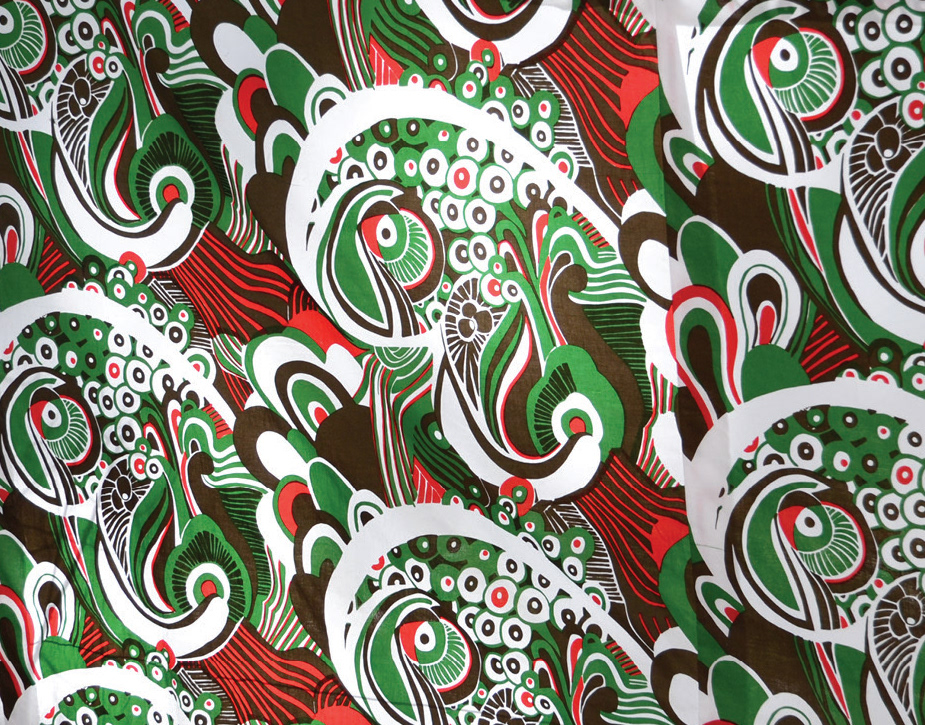Doctoral thesis
PINTO, C.Z. (2013)
NARRATIVES FOR PRINT TEXTILE PATTERN DESIGN: Poetic Dialogues in Spaces
Art Research Department, Tama Art University, Tokyo, Japan
The objective of my PhD thesis was to investigate my personal modes of creating narratives for print textile pattern design as a means of creating an awareness of the poetic dialogues that patterns play in space. Poetically, I regard textile pattern design as analogous to Nature, in which patterns are portable landscapes that allow us to trigger our imagination and use it to cover the different surfaces of the objects and spaces surrounding us.
My approach to pattern creation is based on taking cultural references from everyday life in the form of concepts and images, in order to use these references to create sketches – as a starting point for creating visual narratives for patterns. The creative process is carried out by using verbal and visual languages as creative tools. Along my creative practice, I developed semiotic tools to collect, archive and transform references and sketches into pattern motives: such tools are the Semiotic Table, Repertories and Modes of Image Representation. Along this process, I consider the concept of Structures as a basic feature for the creation of blocks of meanings that, like pieces of a puzzle or a Lego, are combined to further generate new concepts/images. In pattern design, the motives are organized
in a certain structure of repetition which defines the pattern's personality. From this point on, I introduce the concepts of Narratives and Composition in my creative process: the combinations of blocks in a certain structure generates narratives inside the pattern's visual surface.
in a certain structure of repetition which defines the pattern's personality. From this point on, I introduce the concepts of Narratives and Composition in my creative process: the combinations of blocks in a certain structure generates narratives inside the pattern's visual surface.
Following this explanation, I contextualize patterns in space, acknowledging the poetic ways through which the narratives printed in textiles create atmospheres as a dialogue between the fabric`s materiality, the story visually represented in the pattern, the surrounding environment, and the user, who is regarded as both an individual personality and a physical body. As a result of these dialogues the user, with his/her sensibility, responds emotionally to the surrounding atmosphere. One of my conclusions is that the pattern is connected with our body, objects and the surrounding cultural and natural environments by their mutual proportions and scales, as well as by the meanings that we attribute to these relations – following relations of similarity and difference, metonymical contiguities and irony, for example.
In order to develop this argumentation, I conducted one exhibition of my series of patterns in an interior space (a gallery) and another exhibition in a natural environment (a forest). Then I identified the connections between fabric and natural space to occur through natural phenomena, like light and shadow, wind, positive and negative spaces, insects, plants and trees, the configuration of the terrain, etc. In interior spaces as well, furniture, rugs, curtains, colors, light and shadow, for example, connect spaces and patterns together.
Finally, I consider that fabrics create positive atmospheres when its particular combination of color, composition, motif and mood matches the user`s personal expectations – in the case of surface design, the expectations usually are comfortable places, where one can feel good and relaxed.
At this point, I closed a cycle initiated in 2005 with my introductory monograph about Surfaces (House-Covering and Body-Dressing), this time pointing out the poetic subjects and narratives that arise from the interaction between permanent surfaces (ceramic tiles) and non-permanent, portable surfaces (textiles).
From then on, I continue my research about Narratives and Dialogues in pattern design, gradually expanding these subjects to other fields of interest.



